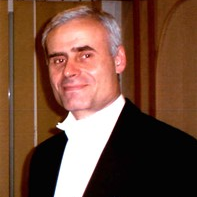Activation of Small Molecules: Challenges and Solutions
A special issue of Molecules (ISSN 1420-3049). This special issue belongs to the section "Green Chemistry".
Deadline for manuscript submissions: closed (31 May 2021) | Viewed by 7956
Special Issue Editor
2. Chemistry Department, Moscow State University, Leninskie Gory 1, Bldg. 3, 119992 Moscow, Russia
3. Institute of Ecology and Engineering, National Science and Technology University MISiS, Leninsky Prospect 4, 119071 Moscow, Russia
Interests: catalysis; nanomaterials; renewables; green chemistry
Special Issues, Collections and Topics in MDPI journals
Special Issue Information
Dear Colleagues,
It is a great pleasure for me to invite you to submit a manuscript to the Special Issue " Activation of Small Molecules: Challenges and Solutions", which will be published in the MDPI journal Molecules.
This Special Issue will focus on interdisciplinary state-of-the-art research articles, communications, and reviews related to various aspects of the utilization of small molecules, especially using nanomaterials as catalysts. The specific aspect of the Special Issue is the catalytic conversion of molecules such as CO2, CH4, C2H6, as well as other small molecules. Approaches that may result in a significant improvement of the efficiency of the conversion/utilization of small molecules into valuable products compared to the conventional technologies are especially welcome. Of special interest, of course, are nanomaterials, since their catalytic activity/selectivity pattern is size-dependent and may be quite different depending on the morphology of the nanoparticles. The incentive of this Special Issue is to show the progress and to reveal new aspects in the broad field of the utilization of small molecules using nanomaterials. Combining individual contributions from these areas will allow us to produce the journal Issue with a high impact. Thus, submissions focused on any novel approaches and materials and their novel applications, which disclose the enhancement of the efficiency of the conversion of small molecules into value-added products, are cordially invited.
Please note that Molecules is an open-access journal, and the whole Special Issue will be freely available for all readers across the world. Information about open-access options and conditions is provided at the journal website.
Prof. Dr. Leonid Kustov
Guest Editor
Manuscript Submission Information
Manuscripts should be submitted online at www.mdpi.com by registering and logging in to this website. Once you are registered, click here to go to the submission form. Manuscripts can be submitted until the deadline. All submissions that pass pre-check are peer-reviewed. Accepted papers will be published continuously in the journal (as soon as accepted) and will be listed together on the special issue website. Research articles, review articles as well as short communications are invited. For planned papers, a title and short abstract (about 100 words) can be sent to the Editorial Office for announcement on this website.
Submitted manuscripts should not have been published previously, nor be under consideration for publication elsewhere (except conference proceedings papers). All manuscripts are thoroughly refereed through a single-blind peer-review process. A guide for authors and other relevant information for submission of manuscripts is available on the Instructions for Authors page. Molecules is an international peer-reviewed open access semimonthly journal published by MDPI.
Please visit the Instructions for Authors page before submitting a manuscript. The Article Processing Charge (APC) for publication in this open access journal is 2700 CHF (Swiss Francs). Submitted papers should be well formatted and use good English. Authors may use MDPI's English editing service prior to publication or during author revisions.
Keywords
- Catalysis
- Carbon dioxide conversion
- Methane conversion
- Ethane conversion
- Small molecules.






